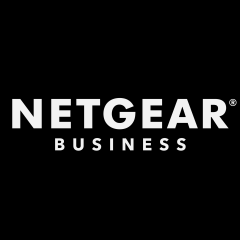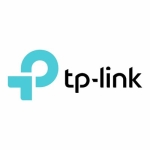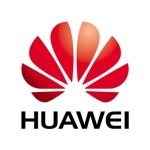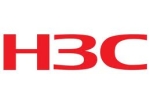What is our primary use case?
We use it for networking. We use the switches from NETGEAR for 10GB internet. We are using the M4300.
We implement our own solutions. We resell to clients in the audiovisual sector. We specialize in audiovisual productions, 3D animation, compositing, and the like. Our clientele is all in the same sector.
How has it helped my organization?
We upgraded from a previous, 1GB-only solution so it should be a lot faster but I don't have any benchmarks on it. In the past, there were some complaints from employees that the network was slow but I haven't had any more complaints about it. That's a metric, of sorts.
What is most valuable?
The most important feature is the failover, the LACP links. That's the dual set it allows. We have redundant core switches and, if one fails or one network adapter fails, the other one can take over without problems.
You have to know a bit about networking of course, but for me the ease of use is about a nine out of ten.
For how long have I used the solution?
Less than one year.
What do I think about the stability of the solution?
It's very stable. I haven't had almost any issues since it was up and running.
I had one issue with an extra WiFi deployment that I did, which caused network interruptions, but it had nothing to do with the core installation. It was just the WiFi equipment that brought down the network because of loop creation, but that had nothing to do with the main switches.
What do I think about the scalability of the solution?
Currently, I have five Ethernet switches running. I think it scales up to eight within one stack, so that is more than enough for our purposes. Instead of going with discrete switches, which have to be managed separately, one of the big advantages of this product is that you can put it all in one stack. The whole switch stack is viewed as one big switch, which is really good for us. So it's very scalable. In the future, I could even add three more switches and I think they have a new product now that has 96 ports. It's way more scalable than we will ever need in our company.
How are customer service and technical support?
I have not needed to contact technical support yet.
Which solution did I use previously and why did I switch?
We used HPE previously. The reason I switched to NETGEAR was because of pricing differences, which are huge, when you go into 10GB networking. It was mainly a price-oriented decision. I also read a lot of positive reviews in the forum I visited, so that was another factor which made me decide to go with NETGEAR.
How was the initial setup?
The setup was very straightforward. I just configured a few IP addresses, maybe a few settings on the ports, and that was it. The whole system was set up in about one hour or so. It went very smoothly.
The whole deployment was in phases. I first set up the core switches and hooked them up to the old switches and then gradually changed everybody over to the new stack. The total time was about a month, before everybody was switched over. It all went very smoothly. It could have been done in a day if nobody had to keep working. There wasn't an option to shut down the company for a complete day, so I had to do it gradually.
I planned the migration ahead of time. I calculated the time it would take to get the units here. We actually did a complete overhaul of our server room. We moved it inside of the building, so I had to switch over to the old switches to the new server room. So there was quite a lot of planning involved, mostly on the timing of when the steps would be taken. I had to do some calculations about how much time every step would take. There was quite a bit of planning, but it all went quite smoothly, so no complaints here.
I don't think anybody without knowledge of networking would be able to set up the system as I did it. Expert is a "big" word, but you have to know something about networking before you can use this kind of product.
What about the implementation team?
I did everything myself. I had some help from people on a forum called Spiceworks. I contacted NETGEAR directly and they put me into contact with the Benelux departments. But I did the integrations myself. We are also a reseller of servers and networking equipment and the like. So I'm quite good at that stuff.
What's my experience with pricing, setup cost, and licensing?
The price-to-performance of this solution, on a scale from one to ten, is about nine.
The pricing is quite good. We don't have any kind of licensing on the device, as far as I know. There's one product which you can purchase a license for, it's NETGEAR Insight, to manage the switches remotely on the Internet, but we don't need it. I just manage them locally.
It helped us save some money, of course. The total cost of the deployment was about 11,000 euros or so. If I had gone with HPE it would have been at least twice as much. I think Cisco might have even been more expensive.
Which other solutions did I evaluate?
At the beginning, I was looking at Cisco vs NETGEAR but I didn't get any response from Cisco. I also looked at HPE, but it was a bit too expensive for a 10GB. I did a minor bit of research about their products, but it quickly became obvious that NETGEAR was the way to go for us.
I didn't consider Ubiquiti. Ubiquiti is okay for smaller deployments but, as I said, we are scaling up in the coming months to about 50 workstations, a few office machines and about ten servers, so I don't know if Ubiquiti would have been an option for us. I know they have high-end gear also, but I didn't look into it.
What other advice do I have?
Just buy it. If the network is the same scale as my network, about 100 PCs and about ten to 15 servers, it's an ideal solution for that. Also, go look on Spiceworks for help. Ask for Kieran. That is somebody from NETGEAR who helped me out a lot.
I don't think anything is missing in the product. I don't think there should be any improvements.
At the moment, we have about 15 users and we will scale up in the coming months to about 50 users. In terms of deployment and maintenance, it's just me. I do everything related to IT in the company.
Everybody uses the product because it's our core switch. I think we have some overhead in regard to the number of clients that are connected at the moment. In that context, I think its usage is about 30 or 40 percent, at the moment.
We don't use the high-bandwidth AV over IP functionality.
Overall I would give it a nine out of ten. Nothing is perfect. If it were perfect, I would just have to plug in some cables and the system would manage itself. Then I would call it perfect. But you still have to put some work into it, and that's normal.
Disclosure: PeerSpot contacted the reviewer to collect the review and to validate authenticity. The reviewer was referred by the vendor, but the review is not subject to editing or approval by the vendor.















Having no fan means no noise. However, on the downside it heats up the machine a lot and needs rebooting. How often it needs to be reboot and in what interval. If not taken care,then there is a high probability that overheating may lead to malfunctioning of some parts thus causing sever network issues.